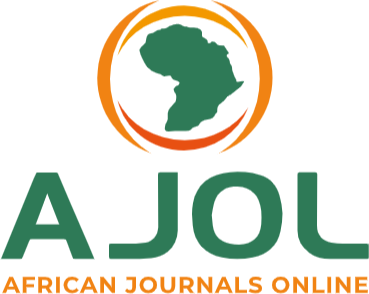Isotherm, Kinetic and thermodynamic investigation on the biosorptive removal of Pb (II) ion from solution onto biochar prepared from breadfruit seed hull
Keywords:
Adsorption, Biochar, Pb (II) ion.Abstract
This study investigates the adsorption of lead(II) ions from aqueous solutions using biochar derived from breadfruit seed hulls, addressing the growing concern of lead contamination in water due to its toxic effects on human health and the environment. The aim of the study was to assess the efficiency of breadfruit seed hull biochar in removing lead ions, with a focus on understanding the adsorption mechanisms and the influence of key parameters. Batch adsorption experiments were conducted, examining the effects of solution pH (2.0–11.0), initial lead concentration (10–50 mg/L), temperature (300 K to 323 K), and adsorbent dosage (0.02–0.1 g). The results showed a significant increase in removal efficiency from 50% to 84.5% as the pH rose from 2.0 to 11.0, with the highest removal occurring at pH 11.0, though pH 6.0 was selected as the optimal condition to minimize the formation of metal hydroxides. Removal efficiency decreased from 83% to 47.6% as the initial lead concentration increased from 10 mg/L to 50 mg/L. Temperature also positively impacted the adsorption, with the removal percentage increasing from 72.5% to 82% as the temperature rose from 300 K to 323 K, suggesting an endothermic adsorption process. The adsorption capacity increased from 4.2 mg/g to 11.9 mg/g with the rise in lead concentration. The Langmuir model provided the best fit for the adsorption data, with a high coefficient of determination (R² = 0.99595) and a separation factor (RL) ranging from 0.1 to 0.41, indicating favourable adsorption. The Freundlich model also indicated favourable adsorption with an n value of 2.622, though it showed a lower fit compared to the Langmuir model. The study concluded that breadfruit seed hull biochar is an effective biosorbent for lead removal, with the adsorption process primarily governed by monolayer adsorption and chemisorption. It is recommended that breadfruit seed hull biochar be considered for water treatment applications targeting heavy metal removal, with further research into its regeneration and large-scale application for environmental cleanup.
Downloads
Published
Issue
Section
Similar Articles
- M. T. Bisiriyu, Fractionation and Characterization of Asphaltenic and Resinous Fractions of Natural Bitumen , Communication In Physical Sciences: Vol. 5 No. 2 (2020): VOLUME 5 ISSUE 2
- Ifeanyi E. Otuokere, K. K. Igwe, Chelating and Antibacterial Potentials of Benzylpenicillin and its Ni(II) Complex , Communication In Physical Sciences: Vol. 8 No. 2 (2022): VOLUME 8 ISSUE 2
- Nwokem, Calvin Onyedika, Kantoma, Dogara , Zakka Israila Yashim , Zaharaddeen Nasiru Garba, Kinetic and Thermodynamic Studies on Adsorption of Pb2+ and Cr3+ from Petroleum Refinery Wastewater using Linde Type a Zeolite Nanoparticle. , Communication In Physical Sciences: Vol. 10 No. 3 (2023): VOLUME 10 ISSUE 3 (2023-2024)
- Kudamnya, Ebenezer Agayina, Godwin Inieke Joshua, Ochelebe, Ibu, Okon, Emmanuel Etim , Evaluation of the Hydrochemistry and Pollution Levels in Groundwater of Njahasang, Southeast Nigeria , Communication In Physical Sciences: Vol. 12 No. 3 (2025): VOLUME 12 ISSUE 3
- Okoche Kelvin Amadi, Stella Mbanyeaku Ufearoh, Innocent Ajah Okoro, Paulina Adaeze Ibezim, Mitigation of the Corrosion of Mild Steel in Acidic Solutions Using An Aqueous Extract of Calopogonium muconoide (cm) as a green corrosion inhibitor , Communication In Physical Sciences: Vol. 8 No. 3 (2022): VOLUME 8 ISSUE 3
- A.D. Onu, Reduction of Trioxobromate(V)Ion By [Cohedtaoh21- in Acid Medium : Kinetics and Mechanism , Communication In Physical Sciences: Vol. 1 No. 1 (2010): VOLUME 1 ISSUE 1
- Blessing Ebong, Review on Microplastic-Polymer Composite Interactions: Assessing Contaminant Adsorption, Structural Integrity, and Environmental Impacts , Communication In Physical Sciences: Vol. 12 No. 3 (2025): VOLUME 12 ISSUE 3
- Abdullahi Abdulkadir, Maryam Lawal Atiku, Synthetic Approaches, Classification, Properties and Application of Metal-Organic Frameworks: A Review , Communication In Physical Sciences: Vol. 12 No. 3 (2025): VOLUME 12 ISSUE 3
- E. C. Ogoko, Pollution status of soil within the vicinity of Automobile mechanic workshops in Owerri Municipality, Nigeria , Communication In Physical Sciences: Vol. 4 No. 1 (2019): VOLUME 4 ISSUE 1
- Charles German Ikimi, Ijeoma Cynthia Anyaoku, Maryann Nonye Nwafor, Biomarker Potentials of Postmortem Vitreous Biochemical Parameters For Resolving Disputed Causes of Death by Drowning Using Animal Models , Communication In Physical Sciences: Vol. 12 No. 2 (2025): VOLUME 12 ISSUE 2
You may also start an advanced similarity search for this article.




